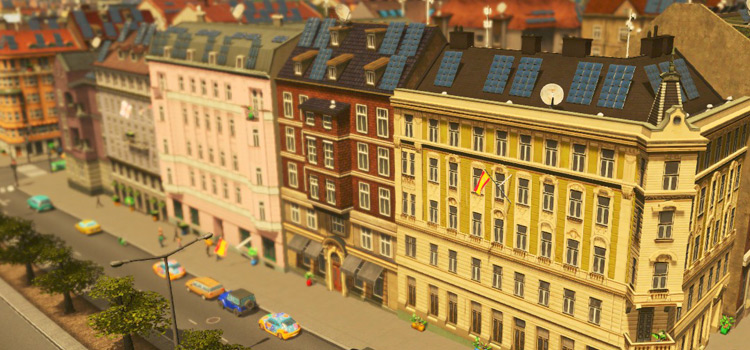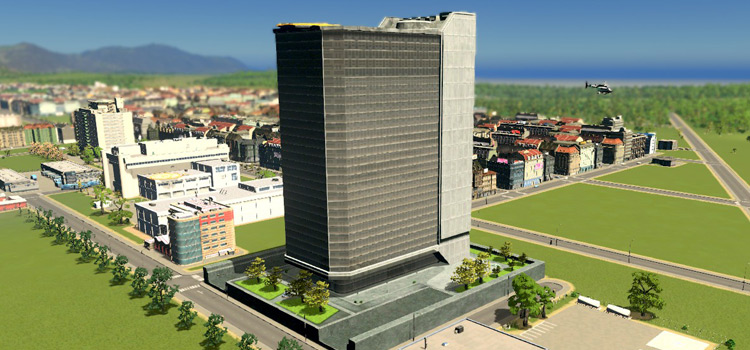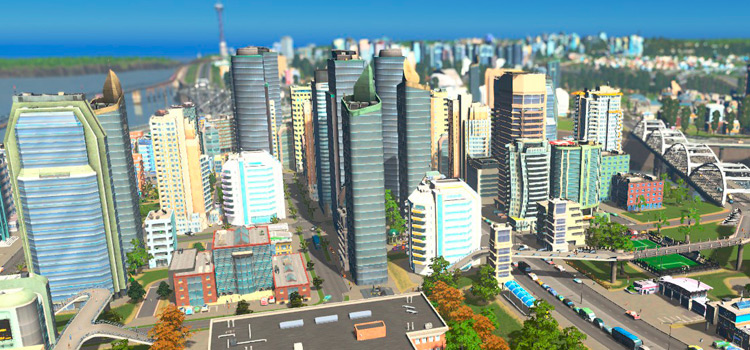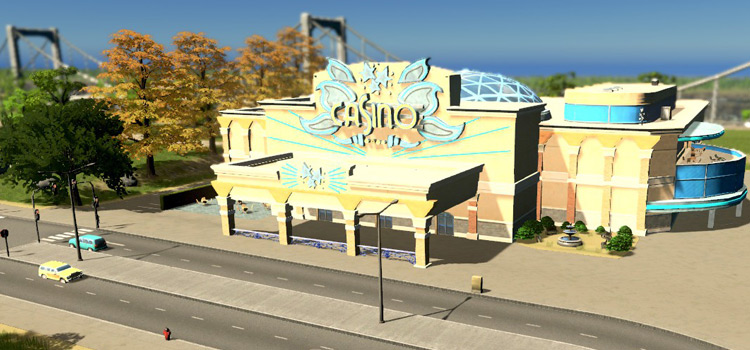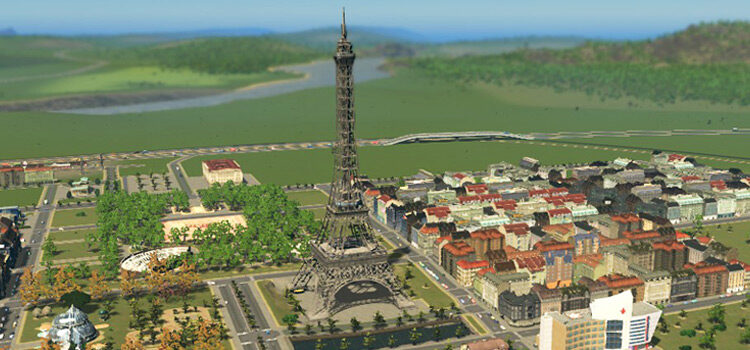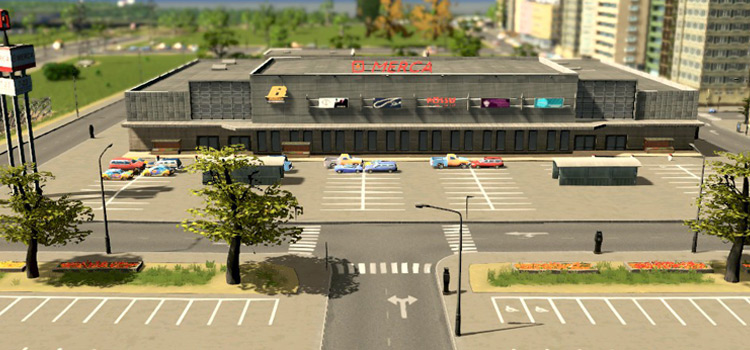
| Hypermarket | |
|---|---|
| Cost to Build | ₡100,000 |
| Upkeep | ₡1,600/week |
| Tourism Value | 150 |
| Entertainment Value | 100 |
| Noise Pollution | 90 |
The Hypermarket is a landmark unique building in European themed maps of Cities: Skylines. To unlock it, you’ll need to achieve two things:
- Reach the Worthy Village milestone
- Have 5,000 squares of commercial zoning built
Once you meet the above requirements, you’ll be able to build the Hypermarket for ₡100,000.
It provides 100 entertainment value and 90 noise (so keep it a fair distance away from your residential zones, as the noise will bother the residents!).
The Hypermarket is only available on European-themed maps, unless European buildings are enabled on all maps by going to Content Manager > Styles.
Demand for Commercial
Perhaps the most challenging aspect of this unlock is having enough demand for commercial zones.

To count towards the unlock progress, the commercial zones will have to be built upon, not just empty. This means there will have to be actual demand for commercial zoning, or else the buildings won’t grow.
Commercial demand goes hand in hand with growing your population.
According to the wiki, there needs to be 1 commercial worker for every 8 citizens for demand to be satisfied.
Simply put, you’ll need to grow your population in order to get the commercial demand that goes with it.
Hold Off On Building Parks (For the Meantime)
The wiki also states that parks and plazas satisfy some commercial demand.
So if you’re trying to have as much commercial demand as possible for this unlock, it might be best to postpone placing any new parks or plazas for now.
Zone Low Density
Both low- and high-density commercial zoning count towards this unlock. However, zoning low-density makes it a little easier to accomplish.
That’s because high-density zoning—having more workspaces per building—will satisfy more demand for the same space (i.e., number of squares).
Managing Your Commercial Zones
Growing that much commercial zoning can come with its fair share of challenges when it comes to city planning.
Here are a few tips for managing it!
Tip 1: Try to scatter your commercial zones in small patches
A large district of commercial buildings, especially if high-density, can be prone to terrible traffic and noise.

Keeping your commercial zones small, and scattering those around the city, can help keep those issues under control.
Tip 2: Provide public transportation
That said, if you want to create something like a shopping district, it’ll help if you provide public transportation options—like a bus stop, metro station, or monorail station—near it.
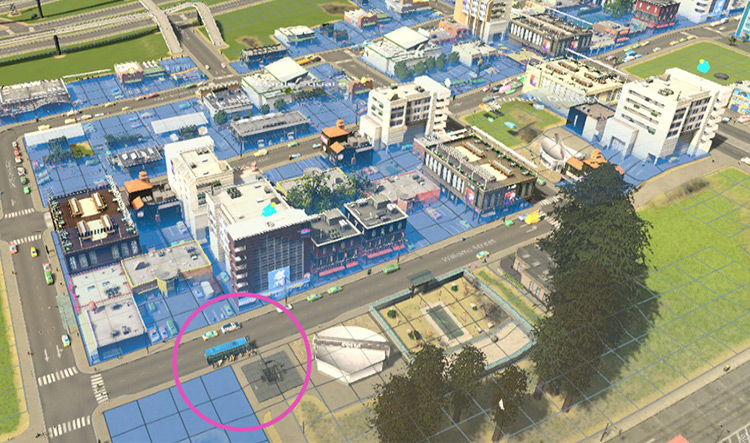
Also provide plenty of pedestrian paths, footbridges, and pedestrian tunnels to make walking there more viable.
The more you can get your citizens to take public transport or walk to and from the shops, the better.
Tip 3: Don’t neglect education
Compared to generic industry zones, commercial zones need more educated workers.
As your commercial zones start growing, make sure there is enough student capacity in your city’s educational facilities.
Commercial zones that go understaffed due to a lack of qualified workers will eventually get abandoned.
-
Cities: Skylines
- How To Unlock the Hypermarket in Cities: Skylines


